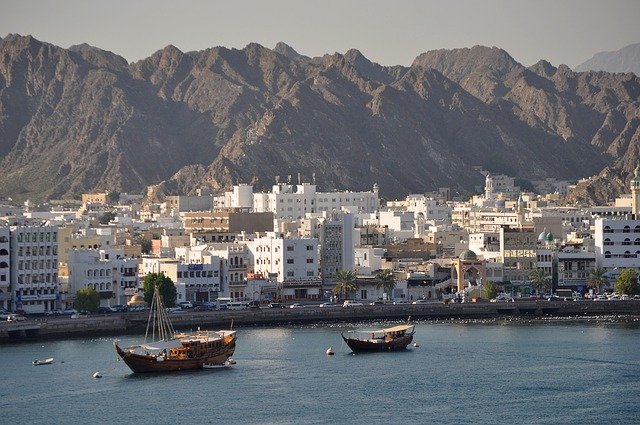By Tim Lambert
Early Oman
As early as 2,300 BC Oman was recorded by the Sumerians of Ancient Iraq as being a rich source of copper. In Ancient Times Oman was also a source of frankincense. After about 500 BC Oman was controlled by the Persian Empire based in what is now Iran. Later they were ruled by other Iranian empires, the Parthians and the Sassanids.
In the 7th century AD, the people of Oman adopted Islam. At that time Iranian influence ended. In 1507 the Portuguese arrived in Oman by sea. The Portuguese needed bases to protect their sea lanes to India and in 1515 they captured Muscat. The Portuguese controlled the coast of Oman for nearly 150 years.
However, in 1650 the Omanis of the interior drove out the Portuguese. Meanwhile, in 1646, Oman signed a trade treaty with England. In 1698 Oman captured Mombasa (Kenya) and Zanzibar.
Then in 1737, the Persians invaded Oman. However, the Omanis soon rallied. In 1747 the Persians were driven out of Oman.
In 1832 the ruler Said the Great moved his capital to Zanzibar. However, after he died in 1856, his sons fought over the succession. As a result, Zanzibar and Oman became separate countries. Finally, in 1913 the interior of Oman split from the coastal region. By the treaty of Seeb in 1920 the Sultan granted the interior autonomy. However, in 1959 the Sultan regained control of the interior of Oman.
Modern Oman
In 1967 oil was exported from Oman for the first time. Oil wealth transformed Oman from a poor country to a rich one. After 1970 the sultan modernized the country in what became known as the Omani Renaissance. In 1971 Oman joined the Arab League and the United Nations. In the years from 1970 to 2013 life expectancy in Oman greatly increased. In 2003 women in Oman were allowed to vote for the first time.
In the 2010s revenue from oil fell but the government of Oman tried to diversify the economy. Today Oman is a prosperous and developed country. In 2024 the population of Oman was 4.6 million.

Last Revised 2025